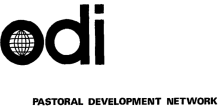Resource information
This article discusses the zoning of 'Communual Areas' on tribal grazing land in Botswana, in which communities retain collective land rights.From the experience gained during six years of attempting to establish and operate communal grazing cells a number of conclusions can be drawn in relation to co-operative action and development project approaches and in the communal areas of Botswanahe communal grazing cell scheme was badly designed. It introduced too many alien concepts simultaneously, took insufficient cognisance of traditional attitudes to cattle ownership, and did not secure active participation by the members.group action to overcome a problem perceived by outsiders can only be expected if that problem is also recognised and considered important by the community.Ideas may be introduced but the actual initiative for change should come from the people.the issues of grazing control and stock limitation can probably be successfully tackled only when the problems more readily perceived by the communities have been addressed and overcomeboundary recognition is an essential pre-requisite to voluntary stock control, and is more easily established for cohesive groups



